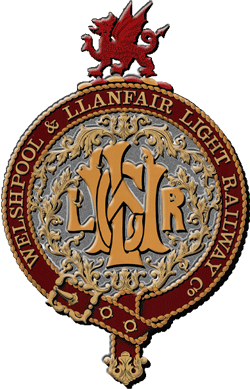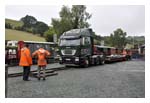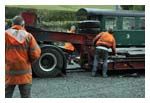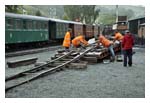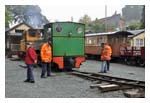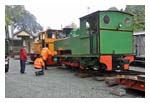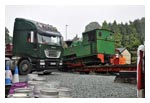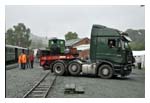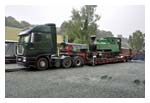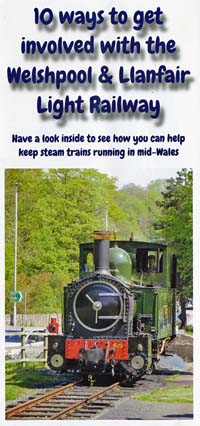WELSHPOOL & LLANFAIR LIGHT RAILWAY
William Slim
ARTICLE
Welshpool & Llanfair Light Railway
Welshpool Wales
United Kingdom
N52.659599 W3.160087

(Welshpool Station)
This narrow gauge railway is located near the eastern Welsh border about 5 kilometres from England in the old county called Montgomeryshire but now named Powys. The railway track is thirty inch gauge (762 millimetres) which is very close to "Bosnian" gauge which is 760 millimetres. This may account for the railway's use of carriages obtained from the Zillertalbahn which is 760 millimetre gauge. The line is 8 1/2 miles (13.7 kilometres) long and generally follows the River Banwy Valley in low hills covered with farms between the Raven Square station in Welshpool and Llanfair Caereinion at the western terminus of the railway. The engine sheds, maintenance shops, and locomotive servicing facilities are located at Llanfair Caereinion.
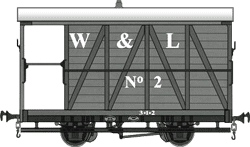
W&LLR brake van.
Volunteers formed the Welshpool & Llanfair Light Railway Preservation Company Limited in 1960 leasing the line from British Railways at the end of 1962.(British Railways had taken over from the GWR during nationalization of Britain's railways in 1948.) Locomotive Number 1, the "Earl", appeared on the railway following an overhaul in 1961. Original coaching stock was long gone but some passenger carriages were acquired so initial service began between Llanfair Caereinion and Castle Caereinion in 1963, about halfway to Welshpool. By 1972 services were extended to Sylfaen with the intention of re-opening trackage into Welshpool proper. By this time things were going well so in 1974 the railway purchased the property from British Railways for the sum of £8,000 (that's $13,723 or $69,234 adjusted for inflation).
However, the route through town to the standard gauge mainline station was blocked when the Welshpool Borough Council decided to construct a car park and road bypass, now Brook Street. The crossing of Church Street would no longer be possible following construction. The railway managed to run some trains through town before construction of the bypass and parking lot as this photo shows. All this resulted in a new Welshpool terminus being created at Raven Square on the western outskirts of the town with passenger service commencing there in 1981. Shortly thereafter there was a requirement for new carriages which were gratefully donated by the Zillertalbahn (760 millimetre gauge) in Austria.Over the past several years equipment from abroad has joined the railway in its quest to maintain and improve including a South African tamper, a Taiwanese diesel, two Hungarian passenger carriages, plus one from Austria, a Romanian steam locomotive, and even an Austrian rollwagen. (A narrow gauge rollwagen (roll-vah-gen) is like a low flatcar capable of carrying a standard gauge rail car on its deck. Several Austrian narrow gauge lines make use of them.
* See these two Pinzgauer Lokalbahn rollwagen photos.

 .
.Monday morning hangover. The railway's 2018 Steam Gala was held from the 31st of August to the 2nd of September. Monday the 3rd was hangover day as the party was over and clean-up continued. Immediately after the Gala, and on the following day, all the special arrangements set up for the Gala had to be taken down, trade stands, the beer tent and equipment removed, and the biggest item, removal of visiting Sittingbourne & Kemsley Light Railway locomotive "Superb". This involved a procedure which took several hours loading the engine onto a lowBoy (it's called a low-loader in Britain) for road transport back to Sittingbourne in Kent. Follow this loading procedure in the photos below:
Match the colour of your day of travel to the appropriate coloured timetable below. Red boxes indicate special events. Trains do not operate on white days.

See the website or phone for current details.
See the website or phone for current details.






The fare ranges from free up to £32 per family for return journeys.
See the website or phone for current details.
Every effort will be made to maintain the services shown. However, the Welshpool & Llanfair Light Railway reserves the right to cancel, alter, or suspend any train without notice and accepts no liability for any loss, inconvenience, or delay thereby caused. Members' free travel is not valid on some special events and is valid on vintage trains when space permits.

